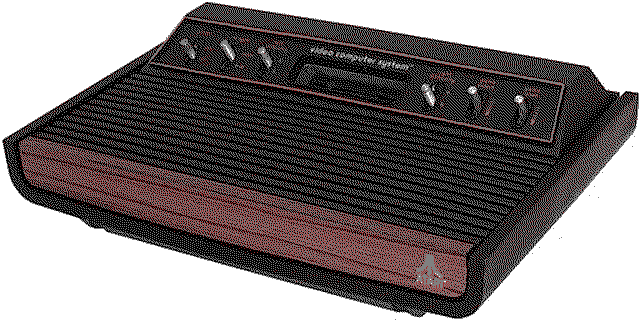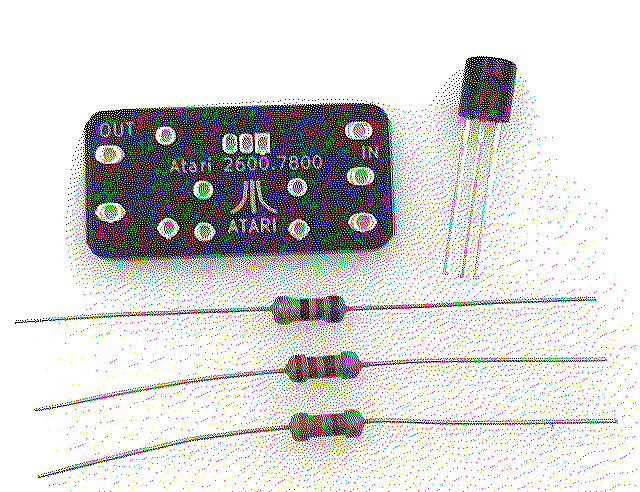_ _ /\ | | (_)
/ \ | |_ __ _ _ __ _
/ /\ \| __/ _` | '__| |
/ ____ \ || (_| | | | |
/_/_ \_\__\__,_|_|_ |_|
|__ \ / / / _ \ / _ \
) / /_ | | | | | | |
/ / '_ \| | | | | | |
/ /| (_) | |_| | |_| |
|____\___/ \___/ \___/
/\ | | (_)
/ \ | |_ __ _ _ __ _
/ /\ \| __/ _` | '__| |
/ ____ \ || (_| | | | |
/_/_ \_\__\__,_|_|_ |_|
|__ \ / / / _ \ / _ \
) / /_ | | | | | | |
/ / '_ \| | | | | | |
/ /| (_) | |_| | |_| |
|____\___/ \___/ \___/
A.V. Repair
Some time last year I started listening to the Every 2600
Game podcast, which prompted me to bring my Ataris down
from the loft and play a few levels of Hero. I knew from
when I had put them away that the one didn't work
correctly, and the other *really* didn't work correctly.
I took a punt and purchased a composite A/V mod off
Aliexpress in the hope that it might be the easiest way
to repair the really broken VCS (no sound, weak image and
wrong colours...no matter how much I adjusted the pots).
A few weeks later the following tiny (I can't stress that
enough) PCB came along with a 3 ply cable, 3 resistors, a
transistor and 3 external phono connections (which I'm yet
to mount as I'm terrified to break the case).
 It required a couple of components to be removed from
within the Atari itself (which I wasn't a fan of), a
great tutorial can be found at the bottom of this page.
And lo and behold when I plugged it in to the TV (modern)
I had picture (in the correct colours), and sound! An
amazing turn around for £5 I was astonished.
...now time to dust off frogger.
Instrucatbles 2600 AV Mod Guide
It required a couple of components to be removed from
within the Atari itself (which I wasn't a fan of), a
great tutorial can be found at the bottom of this page.
And lo and behold when I plugged it in to the TV (modern)
I had picture (in the correct colours), and sound! An
amazing turn around for £5 I was astonished.
...now time to dust off frogger.
Instrucatbles 2600 AV Mod Guide
 /\ | | (_)
/ \ | |_ __ _ _ __ _
/ /\ \| __/ _` | '__| |
/ ____ \ || (_| | | | |
/_/_ \_\__\__,_|_|_ |_|
|__ \ / / / _ \ / _ \
) / /_ | | | | | | |
/ / '_ \| | | | | | |
/ /| (_) | |_| | |_| |
|____\___/ \___/ \___/
/\ | | (_)
/ \ | |_ __ _ _ __ _
/ /\ \| __/ _` | '__| |
/ ____ \ || (_| | | | |
/_/_ \_\__\__,_|_|_ |_|
|__ \ / / / _ \ / _ \
) / /_ | | | | | | |
/ / '_ \| | | | | | |
/ /| (_) | |_| | |_| |
|____\___/ \___/ \___/